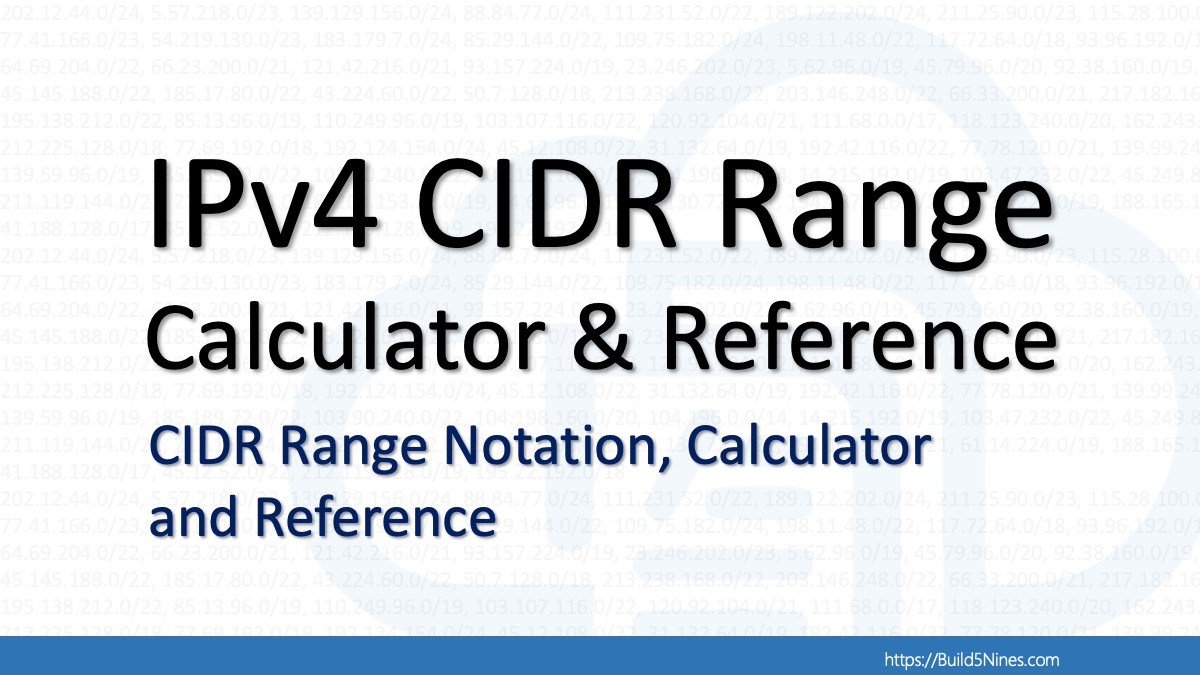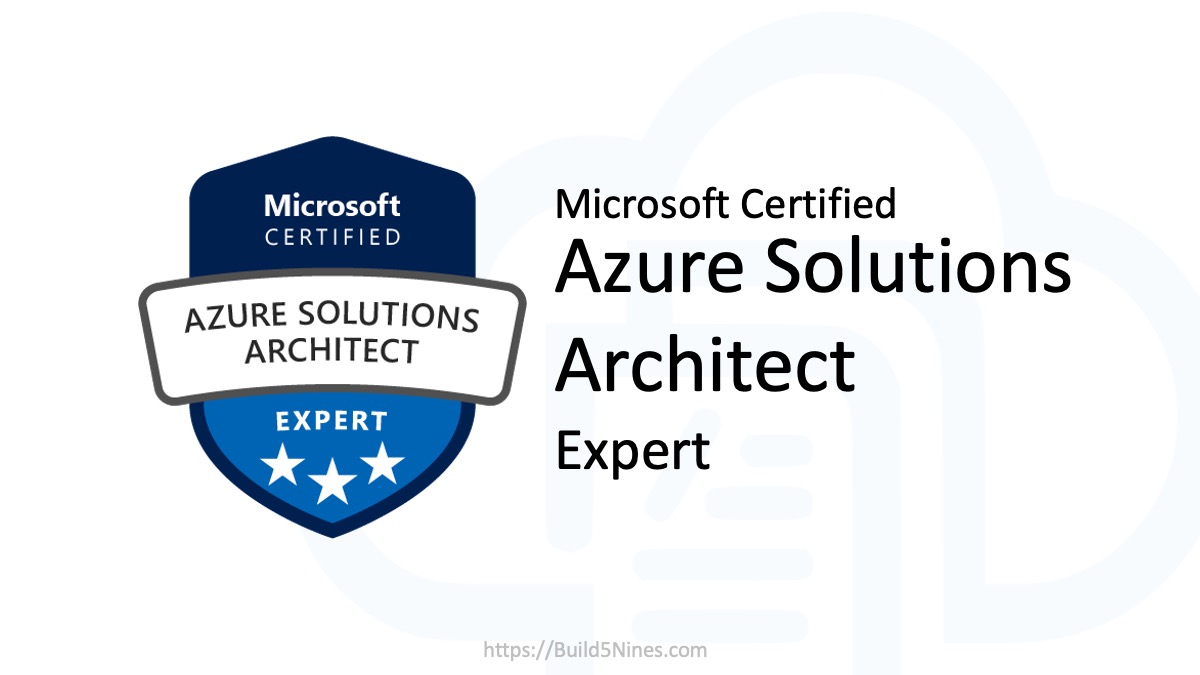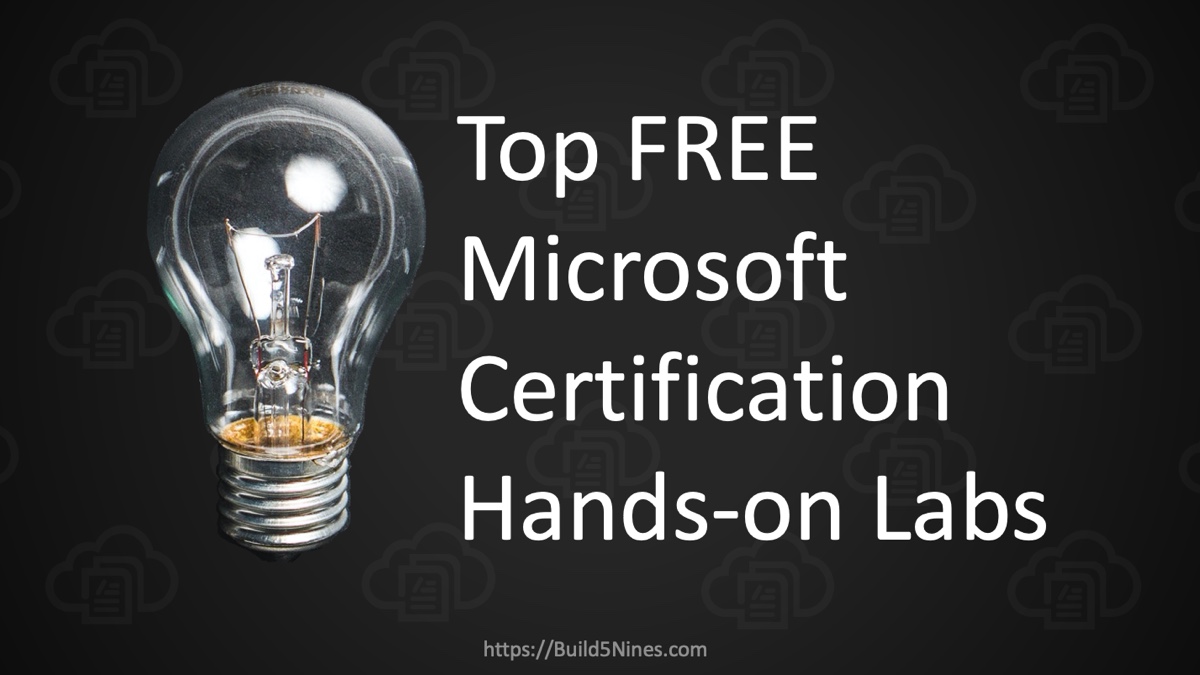The Microsoft Azure IoT Developer certification exam (AZ-220) tests and validates your expertise as an Azure Internet of Things (IoT) Developer. Passing this exam will earn you the Microsoft Certified: Azure IoT Developer Specialty certification. If you are an IoT developer in the cloud, or an Azure developer moving towards IoT, then this is the certification for you!
Certification Retired: Microsoft has retired the AZ-220 Azure IoT Developer certification exam as of July 31, 2023. If you have previously earned this certification, you may be able to renew it until sometime in 2024. Additionally, Microsoft has not announced any plans to replace the AZ-220 with a different exam offering.
The Microsoft Certified: Azure IoT Developer Specialty certification was the FIRST Cloud Internet of Things (IoT) developer certification from the big cloud providers. If you want to be at the cutting edge of one of the hottest areas in software development, then you definitely want to earn the Microsoft Certified: Azure IoT Developer Specialist certification!
I was personally involved as a Subject Matter Expert (SME) with Microsoft on development the Microsoft Azure IoT Developer certification exam when it was first created. I was also the SME that wrote all the initial hands-on labs for the Microsoft Learning training materials for the AZ-220 exam. It was a pleasure to be involved in the process of designing the Microsoft Azure IoT Developer exam and certification. And, it was an honor to be invited as an independent subject matter expert by Microsoft to help them create it way back in 2019!
Table of Contents
Certification Target Audience
The Microsoft Azure IoT Developer (AZ-220) certification is targeted towards all Developers working on building IoT solutions utilizing Microsoft Azure services and technologies. As such, Azure IoT Developers will be developers with a good understanding of the Azure services used to build IoT solutions with both Cloud and Edge integration.
The key job responsibilities of an Microsoft Azure IoT Developer include the following:
- Coding IoT solutions using at least one Azure-supported language, including C#, Node.js, C, or Python.
- Creating and maintaining the cloud and edge portion of IoT solutions
- Configuring and Maintaining devices using Azure cloud services
- Setting up and configuring physical IoT devices
- Deploy compute / container resources and configure device networking
- Integrating data pipelines and data transformations as they relate to an IoT solution.
- Recognize the Azure IoT service configurations necessary for an IoT solution.
During the day to day duties of an Azure IoT Developer, they will perform the above mentioned activities, including a few related activities necessary to build and maintain a full Azure IoT solution. This will include design and code on physical devices, at the Edge, and into the Cloud.
While this exam focuses on the Azure IoT services and technologies primarily, it will expect you to have an understanding of coding physical devices using the Azure IoT Device SDKs.
Exam Prerequisites
Neither the Azure IoT Developer exam (AZ-220) or the Microsoft Certified: Azure IoT Developer Specialty certification have any hard prerequisites that need to be met. This means you can take the AZ-220 certification exam all by itself, and still earn the certification. However, I do recommend that you gain familiarity with Azure IaaS and PaaS services before attempting the AZ-220 certification exam.
If you have a limited amount of experience developing solutions using Microsoft Azure services, and are looking to become an Azure IoT Developer, then I recommend you start by considering the following two exams and certifications:
- Microsoft Certified: Azure Fundamentals – A great starting point for those just getting started with, or having little experience with the Microsoft Azure cloud.
- Microsoft Certified: Azure Developer Associate – A great way to validate your skills, and ensure readiness to be able to develop software solutions using Microsoft Azure services.
Keep in mind that the AZ-220 Azure IoT Developer certification does NOT have any prior prerequisites. This exam can be taken, and the certification earned by passing the single AZ-220 exam.
At a minimum, I would recommend you take and pass the AZ-900 exam, to earn the Microsoft Certified: Azure Fundamentals certification. This certification will give you a primer and general understanding of the cloud and Microsoft Azure services. This exam and certification is the recommended starting point for anyone looking to earn any of the Azure certified “Associate” level certification exams.
Additionally, depending on your previous experience, you may want to look at taking and passing the AZ-204 Azure Developer certification exam, and earning the Microsoft Certified: Azure Developer too. Studying for, and passing, this exam will ensure you have a great overall understanding of developing cloud solutions using Microsoft Azure services.
Exam Objective Domains
Here is a list of the skills and exam objectives verified by the AZ-220 Azure IoT Developer certification exam. Keep in mind, the percentages next to each objective area represents the amount of exam questions that are focused in that objective area.
The AZ-220 exam was updated to include these objectives January 30, 2023.
Set up the Azure IoT Hub solution infrastructure (15-20%)
Create and configure an IoT Hub
- Create an IoT Hub
- Register a device
- Configure a device twin
- Configure IoT Hub tier and scaling
Build device messaging and communication
- Build messaging solutions by using SDKs (device and service)
- Implement device-to-cloud communication
- Implement cloud-to-device communication
- Configure file upload for devices
- Optimize message size and scaling for IoT Hub
- Connect to IoT Hub by using Transport Layer Security (TLS) server certificates
Configure physical IoT devices
- Recommend an appropriate protocol or gateway based on device specifications
- Configure device networking, topology, and connectivity
- Add IoT Plug and Play capabilities to a device in a model-driven solution
Provision and manage devices (15-20%)
Set up the device provisioning service
- Create a Device Provisioning Service
- Create a new enrollment in the device provisioning service
- Link an IoT Hub to the device provisioning service
Manage the device lifecycle
- Provision a device by using the device provisioning service
- Deprovision an auto-enrollment
- Decommission (disenroll) a device
Manage IoT devices by using IoT Hub
- Manage devices list in the IoT Hub device registry
- Modify device twin tags and properties
- Specify a set of devices to manage by using IoT Hub Automatic Device Management
- Implement and manage configuration on a set of devices by using IoT Hub Automatic Device Management
- Control access to device functionality by using module identities and module twins
Manage IoT devices by using Azure IoT Central
- Create and manage device templates by using Azure IoT Central and Digital Twins Definition
- Language (DTDL)
- Configure rules, actions, and commands in Azure IoT Central
- Add, enroll, and manage devices by using Azure IoT Central
- Manage Azure IoT Central applications, including security, tenants, customization, and visualizations
- Manage data integration, including data ingress, data export, and data transformation
- Configure and manage Azure IoT Central jobs
- Manage Azure IoT Central by using APIs
Implement IoT Edge (20-25%)
Set up an IoT Edge device
- Create a device identity in IoT Hub
- Set up an IoT device for IoT Edge
- Install container runtime on IoT devices
- Configure container startup options to interact with the host system
- Update IoT Edge runtime
- Provision IoT Edge devices by using the device provisioning service
Deploy an IoT Edge device
- Create and implement a deployment manifest
- Create a deployment for a single IoT Edge device
- Create a deployment to target multiple devices
- Create a continuous deployment by using Azure DevOps
Develop IoT Edge modules
- Create and customize an IoT Edge module
- Deploy a custom IoT Edge module to an IoT Edge device
- Publish an IoT Edge module to Azure Container Registry
- Define module configuration
- Configure IoT Edge module routing
- Configure environment for IoT Edge development
Configure an IoT Edge device
- Select an appropriate gateway pattern
- Deploy an IoT gateway by using IoT Hub and IoT Edge
- Configure IoT Edge certificates
- Implement and configure offline support (including local storage)
- Create a layered hierarchy of IoT Edge devices
- Interact with the IoT Edge security manager
Implement business integrations (5-10%)
Integrate with upstream and downstream systems
- Set up input and output connections to support native Azure services and to enable third-party services
- Set up IoT Hub routing to support downstream Azure resources
Develop an IoT solution that uses Azure Digital Twins
- Create models and digital twins
- Map IoT device data to digital twin models and relationships
- Ingest IoT device messages, and translate messages to digital twins
- Configure routes and endpoints to trigger business logic and data processing
- Manage and query the Azure Digital Twins graph
- Update properties on Azure Digital Twins entities in the graph
- Monitor and troubleshoot Azure Digital Twins
Process and manage data (10-15%)
Configure message routing in Azure IoT Hub
- Implement message enrichment in IoT Hub
- Implement routing of IoT device telemetry to endpoints
- Implement routing of IoT Hub non-telemetry events to endpoints
- Define and test routing queries
- Configure IoT Hub as an Azure Event Grid source
- Reconfigure the default Azure Event Hubs endpoint when there are multiple endpoints
Configure stream processing of IoT data
- Create Azure Stream Analytics for data, and stream processing by using the Azure portal
- Process and filter IoT data by using Azure Functions
- Write user-defined functions and aggregations in Stream Analytics
- Consume Azure Machine Learning functions in Stream Analytics
- Configure Stream Analytics outputs
Create Azure Stream Analytics queries
- Write a Stream Analytics query that runs in IoT Edge
- Write a Stream Analytics query that runs in the cloud
Monitor, troubleshoot, and optimize IoT solutions (10-15%)
Configure health monitoring
- Configure rules and alerts based on IoT Hub metrics
- Set up diagnostics logs for IoT Hub
- Apply Azure Policy definitions for IoT Hub
- Gather IoT Edge metrics
- Retrieve diagnostic logs from IoT Edge
Troubleshoot device communication
- Verify that device telemetry is received by IoT Hub
- Validate device twin properties, tags, and direct methods
- Troubleshoot device disconnects and connects
- Troubleshoot IoT Edge modules and devices
- Troubleshoot message loss
- Evaluate and test IoT Hub failover
Implement security (10-15%)
Implement security for IoT devices and services
- Implement device and gateway security, including shared access keys, key rotation, managed
- identities, Hardware Security Modules (HSMs), and Trusted Platform Modules (TPMs)
- Implement secure connections, including access control, authentication, shared access policies, and TLS
- Implement secure networking, including IP filtering and private endpoints
Implement Microsoft Defender for IoT
- Configure a Defender for IoT agent-based solution
- Install and configure Defender-IoT-micro-agents (security agents)
- Configure built-in and custom alerts for IoT Hub
The full, official list of the exam objectives for the Azure IoT Developer (AZ-220) certification exam are available from Microsoft.
Exam Study Tips
Below is a short overview video detailing the exam objectives, prerequisites, and some study tips to help you in deciding if this is the right exam for you, and to help you on your certification journey. Keep in mind this video was recorded in the past and the exam objectives have changed since them (see updated objective domains below), but the other tips and recommendations mentioned in this video are still relevent.

Microsoft Certified: Azure IoT Developer Specialty
Once you take and pass the AZ-220 Azure IoT Developer certification exam, you will automatically earn the Microsoft Certified: Azure IoT Developer Specialty certification!
This is the first Cloud IoT Developer certification offered. Neither Amazon or Google offer an IoT Developer certifications for their platforms. By earning the Microsoft Certified: Azure IoT Developer Specialty certification, you will be on the cutting edge of one of the hottest areas in IT!
Microsoft Certified: Azure IoT Developer Specialty is the FIRST Cloud IoT Developer certification offered by the major cloud providers!




 Stack Overflow Upset Over Users Deleting Answers After OpenAI Partnership
Stack Overflow Upset Over Users Deleting Answers After OpenAI Partnership
 IPv4 Address CIDR Range Reference and Calculator
IPv4 Address CIDR Range Reference and Calculator
 OpenAI GTP-4o Now Available in Azure OpenAI Service
OpenAI GTP-4o Now Available in Azure OpenAI Service
 Run Your Own Local, Private, ChatGPT-like AI Experience with Ollama and OpenWebUI (Llama3, Phi3, Gemma, Mistral, and more LLMs!)
Run Your Own Local, Private, ChatGPT-like AI Experience with Ollama and OpenWebUI (Llama3, Phi3, Gemma, Mistral, and more LLMs!)
 Azure Functions: Extend Execution Timeout Past 5 Minutes
Azure Functions: Extend Execution Timeout Past 5 Minutes









Great News !!!
Hello,please where can I find materials to prepare for this exam
Please subscribe to the Build5Nines Weekly newsletter and I will notify you when my AZ-220 on-demand, video course is available. 🙂 Thank you for your interest!
HI Chris, I would like to become an MVP like you,please assist.I am also interested in your upcoming class.
I appreciate your interest in my AZ-220 Azure IoT Developer certification course I’m working on. 🙂
If you’re interested in becoming a Microsoft MVP, then I recommend you read my article on the topic here: https://build5nines.com/3-steps-awarded-microsoft-mvp/
Hi Chris,
This is a great news. I had subscribed to the newsletter and eagerly awaiting for the course.
Hi Chris,
You’ve been taking too long for the Azure iot course. Please make it faster. Am one among lots of ppl waiting for your azur iot certification course.. Thank you
Satheesh, I truly appreciate your enthusiasm for the course! I was originally waiting for the exam to go live just in case the exam objectives changed. Now, it’s just a matter of time for me to build the course amid all my day job work. I will post here, and announce on the site and newsletter when the course is released. 🙂